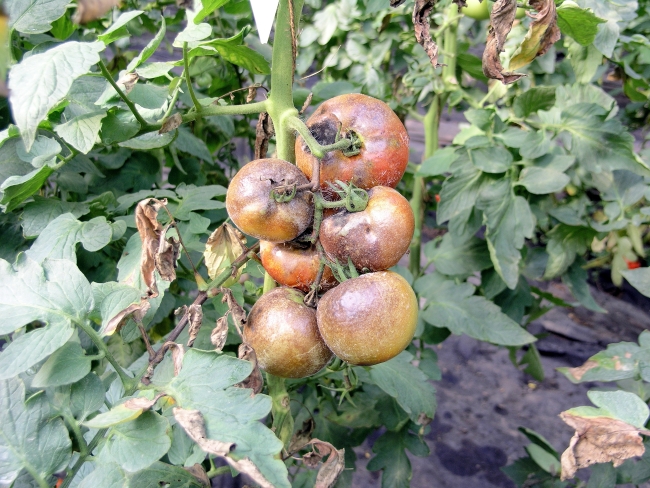How to protect the tomato harvest from late blight
Content
Phytophthora - what is it?
Phytophthora is the most common disease affecting nightshade crops. This fungal culture is equally dangerous for such members of the family as eggplant, potatoes, physalis, peppers and, of course, tomato. The disease appears quite often, striking terror into every gardener, because the whole crop can die as a result. Often people do not know exactly how to deal with this ailment and what preventive measures should be taken. To understand and develop an action plan, you first need to figure out exactly how and for what reasons late blight appears.
There are a fairly large number of factors affecting its appearance, here are the main ones:
- planting different plants of the same crop (in this case nightshade) close to each other. As stated earlier, potatoes and eggplant are also at risk. The fungal disease is easily transmitted from bush to bush;
- insufficient pinning or lack of it. Phytophthora may appear due to insufficient ventilation. Therefore, it is necessary to pinch tomato bushes, especially those that reach the maximum height and, growing, receive less and less air;
- important for the harmonious growth of the tomato is the observance of the temperature regime. Often, at the end of summer, in August, the nights get colder. A knocked down habitual regime is also the cause of the appearance of a fungus;
- the reproduction of the phytophthora fungus is provided by climatic conditions such as rain, as well as cold. Therefore, if you want to get a harvest, you should think in advance about building greenhouses;
- often inexperienced gardeners who are just learning how to properly care for plants water the tomatoes directly on the leaves. It is strictly forbidden to do this, since excess moisture creates a comfortable environment for the fungal culture.
Thus, the main cause of late blight in tomatoes is, of course, excess moisture. Like any fungus, late blight loves secluded, humid and poorly ventilated places. 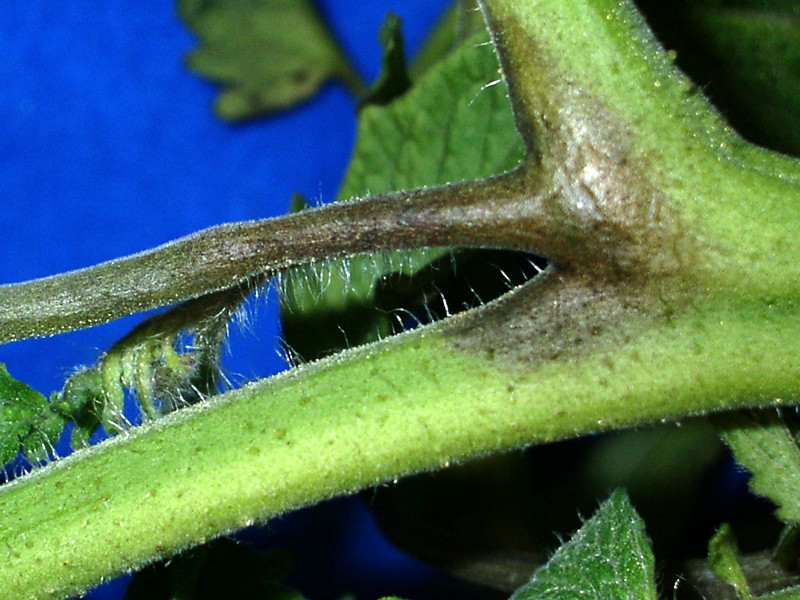 Tomatoes grown in a greenhouse are almost completely protected due to the following factors:
Tomatoes grown in a greenhouse are almost completely protected due to the following factors:
- compliance with the temperature regime;
- watering is strictly regulated, there is no additional uncontrolled humidification (rains);
- constant ventilation controls the level of air humidity;
- the film protects tomatoes from the spread of fungus from other plants in the culture.
Now that the factors causing the disease are known, we can talk about how exactly to distinguish this particular disease from others.
Manifestation of the disease
Potatoes are the first of the nightshades to be affected by late blight. Therefore, experienced gardeners always control this crop in order to reduce the risks of diseases of other plants. To do this, it is necessary not only to conduct a thorough examination, but also to remove all suspicious leaves from the tops of the potatoes, because they may indicate the beginning of the process of infection by the fungus.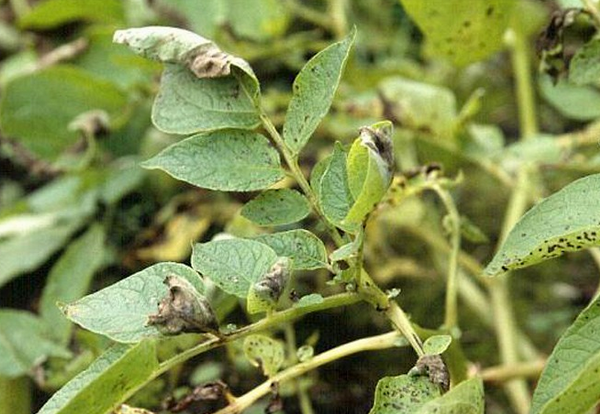
Basically, they cut off the leaves that are almost at the ground.
The parasitic action of phytophthora affects mainly adult plants.
- First of all, you need to pay attention to the leaves of the bush. Irregular brown spots appear on them, as well as a white fluffy bloom. This plaque is the focus of the formation of spores, which are carried by the wind to other plants.
- most often, the fungus begins its destructive effect from the lower leaves, which are closest to the soil, and therefore suffer more than others from waterlogging. Especially carefully you need to check the edges - it is there that moisture collects;
- over time, inflorescences acquire black color, sepals dry up, peduncles disappear;
- the stems are also affected with brown spots of an elongated shape, but without plaque. Over time, spots can merge into one;
- the fruits begin to rot, affected by brown spots that form under the skin of the tomatoes. Over time, the spots completely affect the entire fetus.
Fight against late blight
To begin with, it is necessary to consider the control measures that warn against late blight on tomatoes. Prevention should be started much earlier than the growing season - during the off-season. After the entire crop has been harvested, the area must be carefully cleaned of any organic debris. They can be buried in a cesspool, or completely removed from the site. The harvested soil must be dug to a depth of about twenty centimeters. If the crop was harvested in a greenhouse, then it is necessary to renew the top layer of the soil, as well as to process the greenhouse with chloride lime.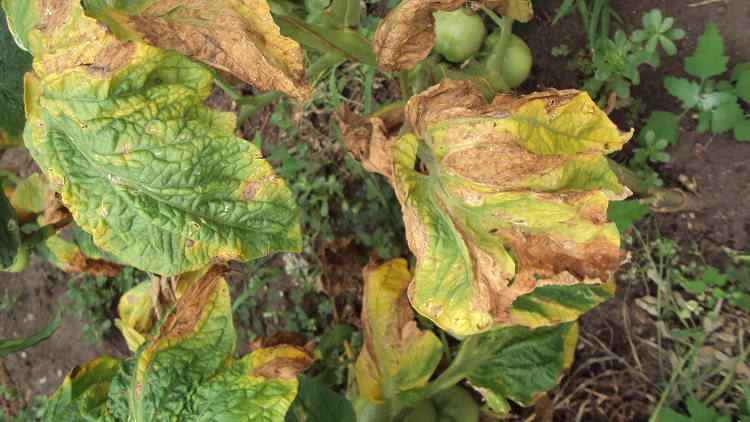
It is important to observe crop rotation. This means that the tomato is recommended to be returned to the same land only four years later. It is necessary to choose the soil for a new planting by understanding the peculiarities of this culture.
Tomatoes should be planted in an area that is well warmed by the sun and where there is no stagnant air. Statistics say that 90% of tomatoes growing in the shade are infected with this fungus.
Removing weeds will provide "breathing" to the lower leaves of the plant, protect them from waterlogging. It is also useful to remove the lower leaves. Be sure to follow the watering schedule, in rainy or cloudy weather it is better to cancel watering. The best watering is in the evening.
There are also a number of precautions for those whose landing area is often prone to late blight of tomatoes. First, it is worth choosing tomato varieties that are more or less protected from disease. Secondly, before planting seedlings, you can process it with 0.5% Bordeaux liquid - a solution of copper sulfate diluted in milk of lime. After one and a half to two weeks, repeat the treatment with a 1% solution. There are also other methods of treatment with chemicals: copper chloride (40 g per 10 liters), watering with an ash solution, or sprinkle ash directly on the ground.
Now we move on to the growing season. What drugs will help us during this period? Basically, various fungicides are used to combat the fungus. They should be based on copper. The most common on the market and available to the consumer are copper sulfate and, previously mentioned, Bordeaux liquid. So, the methods of spraying during the growing season:
- copper-soap solution (2 g of copper sulfate + 200 g of soap + 10 l of water). The whole plant is sprayed with this emulsion. The first time during fruit setting, then after 8-10 days;
- 30 g of potassium chloride + 40 drops of iodine + 10 liters of water. Watering at the rate of 0.5 liters per bush;
- you can also use purchased ready-made preparations: "Oxychoma", "Quadris", "Infinito", "Hom". In stores you can find other drugs - fungicides, they differ little from each other and are equally effective in the fight against late blight of tomatoes.
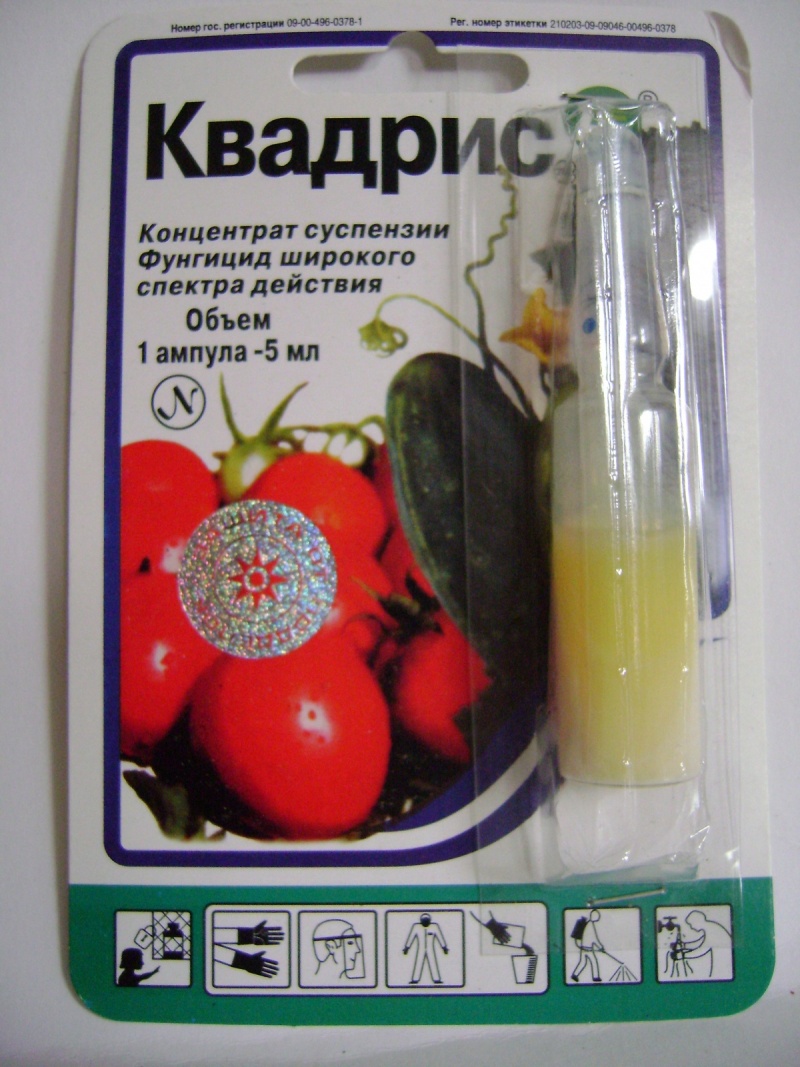 Preventing plant disease is easier than dealing with it and its consequences. Therefore, having carefully studied the information on the nature of late blight of tomatoes, as well as preventive measures in the fight against this fungus, even an inexperienced gardener can easily protect his harvest, and also preserve the health of the soil and other crops planted nearby.
Preventing plant disease is easier than dealing with it and its consequences. Therefore, having carefully studied the information on the nature of late blight of tomatoes, as well as preventive measures in the fight against this fungus, even an inexperienced gardener can easily protect his harvest, and also preserve the health of the soil and other crops planted nearby.
Video "Processing tomato from late blight"
This entry shows when and how to chemically treat tomatoes outdoors to avoid late blight.

